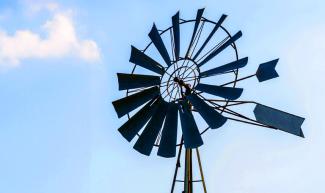
Adding Life to Our Years: Build Your Windmill
“You don’t need a weatherman to know which way the wind blows,” sang Bob Dylan in the counter-culture classic, “Subterranean Homesick Blues.” Today, we still need no meteorologist to feel the retirement winds blowing in a new direction. It is not our parents’ third act. For one thing, we’re living longer.
An ancient Chinese proverb provides us a surprisingly modern weathervane: “When the winds of change blow, some build walls, while others build windmills.”
A new branch of retirement planning is about building our windmills to harness these fresh breezes to our advantage. It is called longevity planning, and the goal is not about adding years to our lives—it’s about adding life to our years.
A productive windmill begins with well-designed blades that turn in unison. For longevity planning, the three blades are wealthspan, healthspan, and selfspan.
Wealthspan: Longevity is challenging traditional retirement planning. Some of the old rules apply: Saving and investing wisely, diversifying our assets, and seeking professional advice to protect wealth from unpredictable economic winds. But it also requires new life expectancy assumptions, stress-testing, and financial and legal planning tools to protect from the biggest longevity gales such as long-term care expenses and elder financial abuse. A good wealthspan blade should rotate reliably, no matter which way or how hard the wind blows.
Healthspan: Healthspan refers to the number of years in which we enjoy good health, free from debilitating illness or chronic conditions. Currently in the U.S., the average healthspan is 12 years shorter than the average lifespan of 78.5 years. Extending healthspan—with a goal of matching healthspan to lifespan—is a central piece of a thriving longevity.
A health care shift from disease management to “P4” (preventative, personalized, predictive, and participatory) medicine is essential. The Stanford Center on Longevity’s “Lifestyle Medicine” initiative is a good example. We must build windmill blades that harness the power of good health.
Selfspan: Personal growth, relationships, and a sense of purpose. Selfspan planning encompasses the development of one’s inner self, nurturing the emotional and intellectual aspects that bring meaning to life. As we consider our hopes and fears, selfspan expands to include our deep desire to remain home, independent, and secure. We all fear being forced by frailty to move, or become a burden, or get tangled up in our challenging health care system. A good selfspan plan today can allow your windmill to avoid or withstand even these kinds of future howling winds. The key word though is today. If we wait until the hurricane comes, it is too late. Too often, families end up at the mercy of where the storm winds blow.
Learn to Pivot
Just as a windmill pivots to face the changing breeze, we must be open to new ideas and experiences. While we may not have control over every gust of change that comes our way, we can choose how we prepare and respond to them. We can build windmills that generate vitality, security, personal growth, and add life to our years. Maybe Bob Dylan was on to something when he said the answer is “blowing in the wind.”
Scott Schill, a Northwest native, found his calling in longevity law after a searing experience advocating for his mom. As the Director of Longevity Law & Planning at S. R. Schill & Associates, and founder of Thrive Longevity Law, Schill believes that relationships are key to longevity. He lives in West Seattle with his family.
More on Longevity Planning:
So, what exactly is this practice of longevity planning, and how can it help us achieve our retirement goals? Read “Longevity Planning—Forecast: Sunny with a Chance of Rain” to learn more.
What are some of those areas we often overlook that are essential to successful planning and preparing for longevity? In “The Power of Planning: Taking Charge of Your Own Aging Journey” we offer a list to review.

